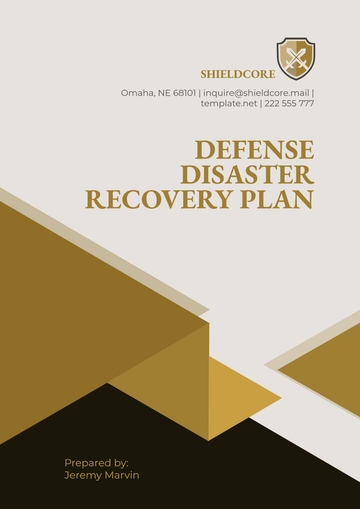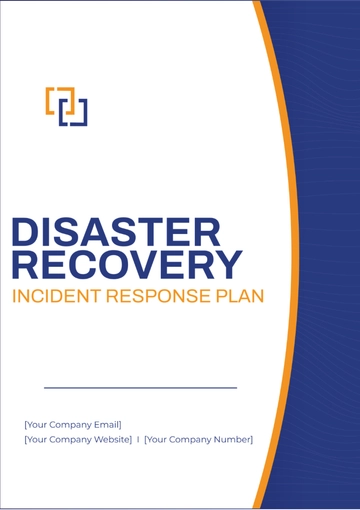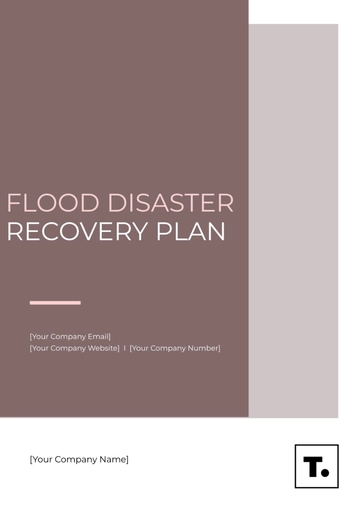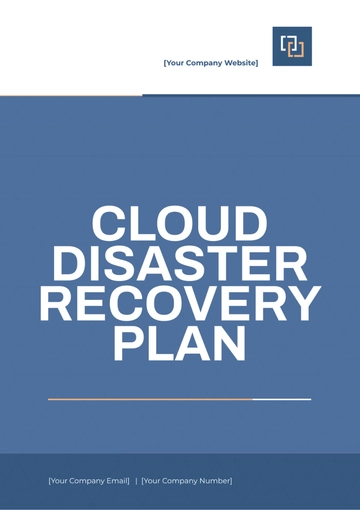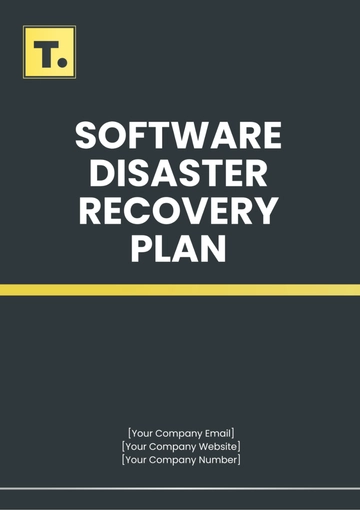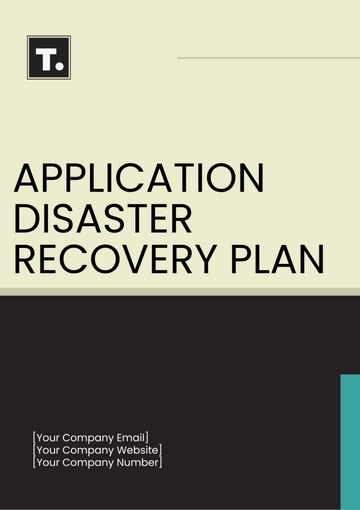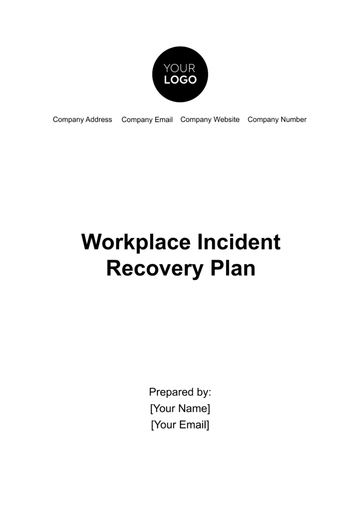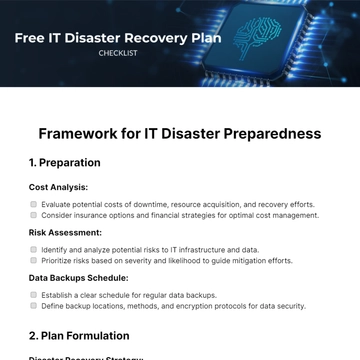Disaster Recovery Plan
I. Introduction
A. Purpose
The purpose of this Disaster Recovery Plan is to ensure that [Your Company Name] can effectively respond to a disruptive event and restore critical business functions within a defined period.
B. Scope
This plan applies to all business units, departments, and personnel within [Your Company Name]. It includes strategies for IT systems, applications, and data recovery.
C. Objectives
Minimize disruption to operations
Ensure the timely resumption of services
Protect company assets and data
Ensure compliance with regulatory requirements
II. Contact Information
A. Company Contact Information
Company Name | [Your Company Name] |
|---|
Address | [Your Company Address] |
|---|
Social Media | [Your Company Social Media] |
|---|
B. Key Personnel
Name | Role | Contact Information |
|---|
[Name 1] | CEO | [Contact Information 1] |
[Name 2] | IT Director | [Contact Information 2] |
[Name 3] | HR Manager | [Contact Information 3] |
III. Disaster Recovery Team
The Disaster Recovery Team for [Your Company Name] consists of the following:
Name | Role | Contact Information |
|---|
[Team Member Name] | [Role] | [Team Member Email] [Team Member Number] |
[Team Member Name] | [Role] | [Team Member Email] [Team Member Number] |
IV. Risk Assessment
A. Risk Evaluation
Potential risks that could disrupt business operations include:
Natural disasters (e.g., earthquakes, floods)
Technical failures (e.g., hardware/software failures)
Cyber-attacks
Power outages
Human error
B. Impact Analysis
Risk | Impact Level | Probability | Priority |
|---|
Earthquake | High | Medium | 1 |
Cyberattack | High | High | 2 |
Power outage | Medium | High | 3 |
Hardware failure | Medium | Medium | 4 |
Pandemic | High | Low | 5 |
V. Recovery Strategies
A. Data Backup and Recovery
Identify the most recent backup.
Verify the integrity of the backup.
Follow restoration steps as per the backup software.
B. IT Systems Recovery
Customer Database
Email Servers
Financial Systems
Customer Database: 1 hour
Email Servers: 15 minutes
Financial Systems: 2 hours
C. Facility Recovery
Servers
Networking Equipment
Office Supplies
VI. Communication Plan
A. Internal Communication
B. External Communication
Clients:
Notify about the disruption and expected recovery time
Vendors:
Coordinate recovery efforts and support
Media:
Designate a spokesperson for media inquiries
VII. Plan Activation
A. Activation Criteria
B. Activation Procedures
Assess the situation.
Ensure the safety of all personnel.
Initiate emergency communication protocols.
VIII. Testing and Maintenance
A. Testing Schedule
Semi-annual testing
Test Types:
Full-scale drills
Tabletop exercises
B. Plan Maintenance
Responsible Team: Disaster Recovery Team
IX. Appendices
A. Glossary of Terms
Disaster Recovery Plan (DRP): A documented process to recover and protect business IT infrastructure in the event of a disaster.
Recovery Time Objective (RTO): The targeted duration within which a business process must be restored after a disaster to avoid unacceptable consequences.
Risk Assessment: The identification and analysis of potential risks that could impact business operations.
B. Document History
Date | Version | Changes Made | Author |
|---|
2050-01-20 | 1.0 | Initial Version | [Your Name] |
Plan Templates @ Template.net


